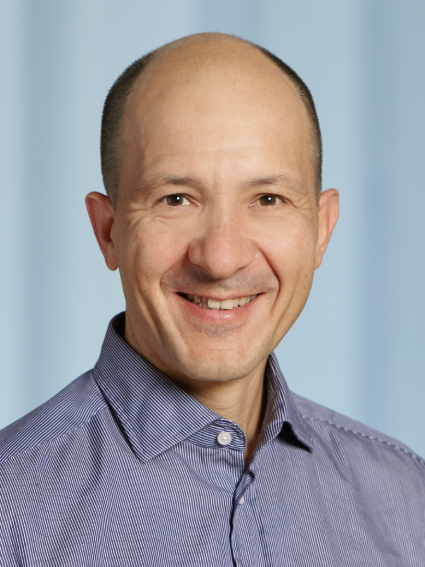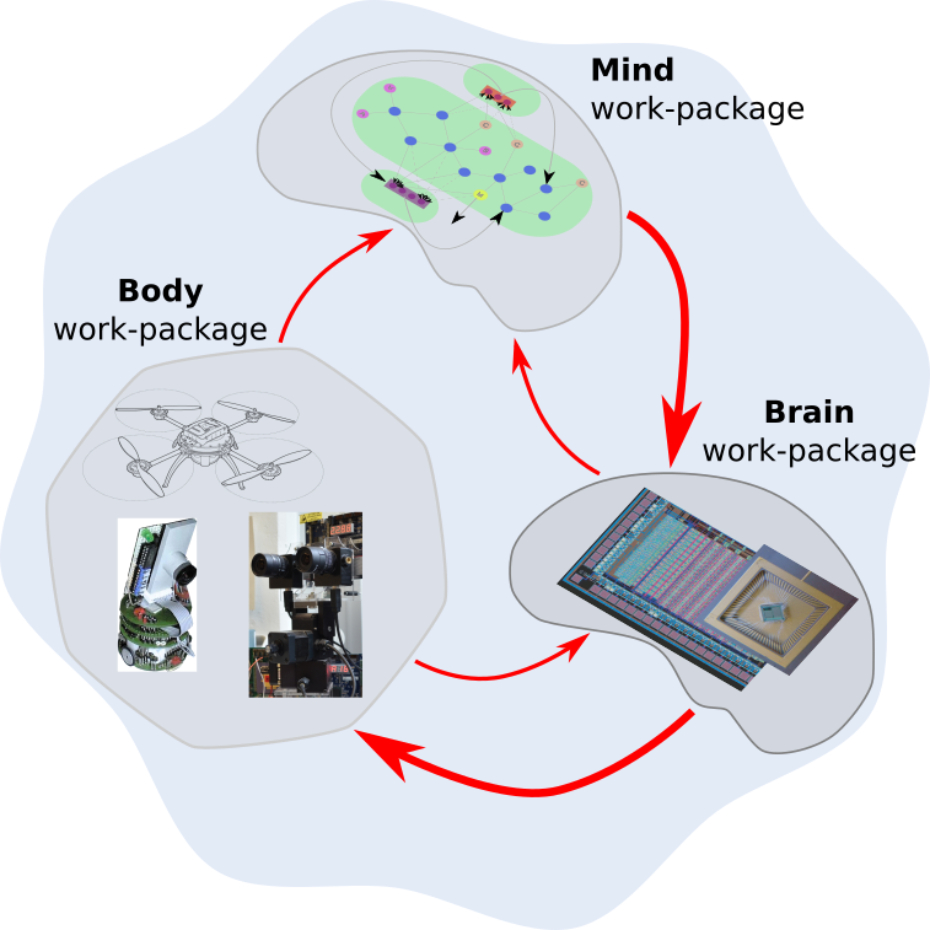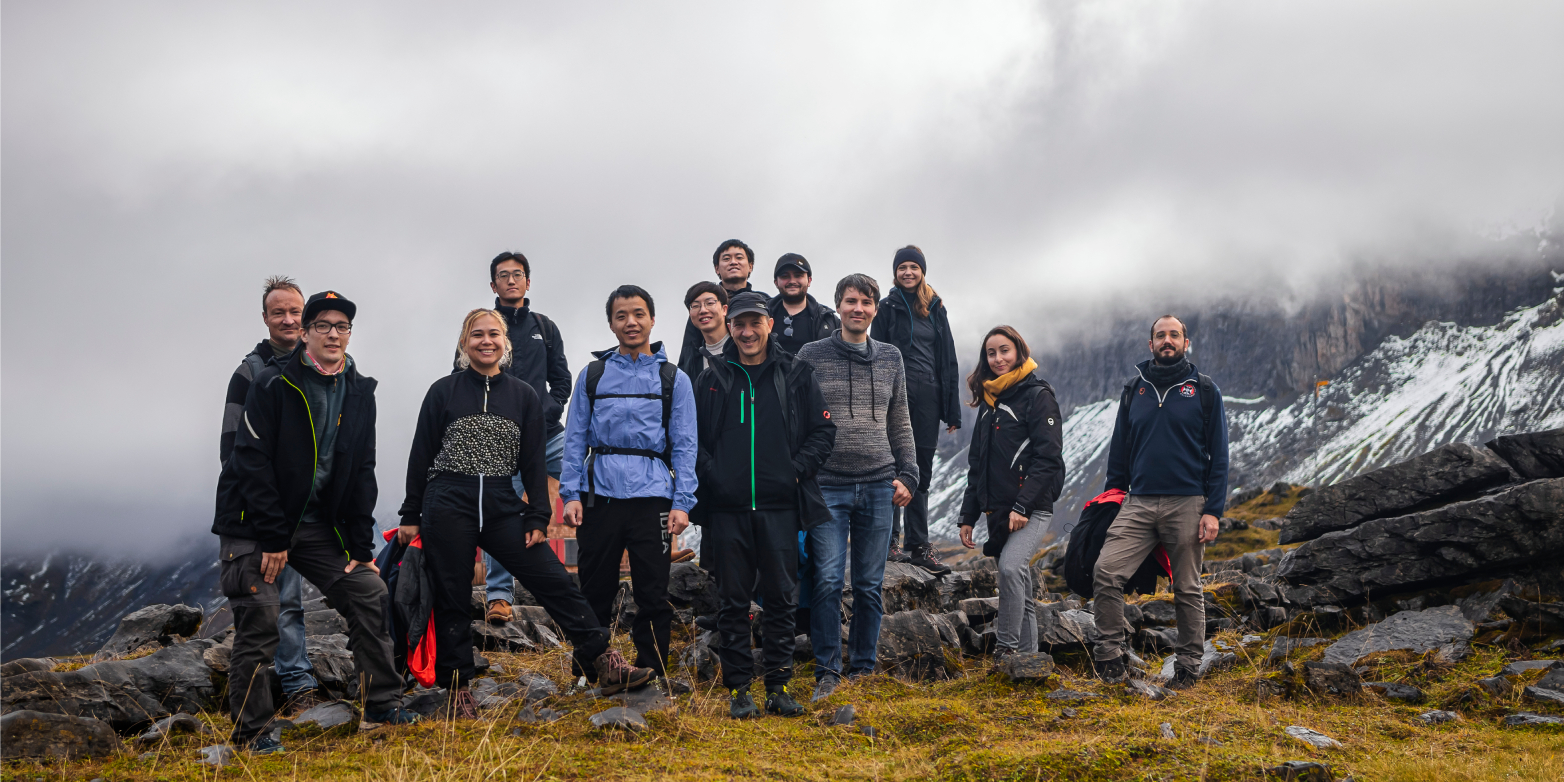"Diversity helps to keep people excited and open-minded"
Prof. Giacomo Indiveri is Associate Professor in the Institute of Neuroinformatics (INI) at ETH Zurich and the University of Zurich. In our interview he talks about his research area Neuromorphic Cognitive Systems which enables electronic circuits to reproduce the dynamics and properties of biological circuits. He also explains how diversity benefits his group.

Prof. Indiveri, what is your main area of research?
My main area of research is Neuromorphic Cognitive Systems, which is also the name of my group. The term neuromorphic was coined in the 1980s by Carver Mead from the California Institute of Technology (Caltech) to indicate electronic systems that are built by taking inspiration from the brain, trying to be as close as possible to real biological neural circuits. One of the goals of my group is to develop a new generation of brain-inspired processing technologies. This means that we need to understand how the brain actually computes. That is why the research I'm involved in includes computer science and theory of computation in general but also fundamental neuroscience. And because we are building electronic circuits that emulate the physics of neural systems, we also need to know about microelectronics circuit design and physics.
So, Neuromorphic Cognitive Systems are really a broad field that encompasses multiple disciplines. There are other research groups in the world that also use the term neuromorphic but do slightly different things.
What kind of neural circuits do you deal with in your research?
We're looking at small neural circuits that carry out signal processing, and that are present in a wide variety of animals, ranging from insects to mammals. We try to identify the fundamental building blocks that can be considered as the basic computational primitives of neural computation, and validate their properties by building them in hardware. For this, the interactions we have with my colleagues at the Institute of Neuroinformatics, who are investigating neural computation with real neuroscience experiments and studies, are crucial.

What brought you to this field? Why does it fascinate you?
As an electrical engineer by training, I was always curious and inspired by building circuits and systems in my studies. Already at the Bachelor’s and Master’s level I started to be fascinated by biology and how the body reacts to different electromagnetic signals. In the early 90s I sort of stumbled upon the field of neural networks, which at that time was very brain-inspired, trying to understand how to copy principles from the brain to implement signal processing and computation. I was lucky to get accepted as a post-doc at Caltech, where professors were working both on electronics and biology. My mentor was Christof Koch, and the lab next door was the lab of Carver Mead where I also spent a lot of time.
I have always liked the combination of theory and practice. I like to actually see the final product, e.g. a chip that demonstrates that an idea actually works in the physical world with real signals, noise, temperature changes, and so on. Engineering is a great discipline that allows you to explore both sides, going from fundamental theories, complex computing, and mathematical concepts all the way to actually building productive physical systems. And this fascination still drives me today.
“One of my group’s goals is to develop a new generation of brain-inspired processing technologies. This means that we need to understand how the brain actually computes.”Prof. Giacomo Indiveri
What is the impact of your research on society? And what are currently the biggest challenges in your field of research?
Of course, the goal of every scientist would be to be able to make some discovery that has a huge impact on society and humanity. The long-term goal of our institute is to understand how the brain works and to use this knowledge to develop new technologies and new tools for society. Curing different types of brain diseases, ranging from mental illness to epileptic seizures, is one long-term potential impact and maybe we can make some incremental steps towards that vision.
As an example, our group can validate or invalidate some of the research findings of my colleagues from Neuroinformatics by testing them on real physical circuits. One of our goals is to contribute to fundamental neuroscience and even medical neuroscience with this type of validation.
Another realistic type of impact that we can have as a research group is that the chips that we are building can actually be used to solve practical problems in the real world, such as simple computational tasks in everyday life.
Which kind of practical applications is your group working on?
Once you have a chip that does processing with signals and data, you can use it to solve practical problems. Many students in my group are interested in using hardware chips with spiking neural networks to decode muscle activity, e.g. signals from EMG (measuring the natural electrical activity of a muscle), to control prosthetic devices, or to record ECG's for detecting anomalies in heartbeats.
In general, we try to find applications that do not require extremely complex and sophisticated neural networks like the ones you would find in the field of AI. Since our chips are relatively small, our networks are relatively small, too. The standard GPUs and CPUs are still too power-hungry, so there is a potential to make a difference with the low-power chips we develop for so-called edge computing. Computing devices “on the edge”, meaning not connected to off-line servers, for example, in your furniture, in your refrigerator or on your T-shirt, may find solutions for problems that currently cannot be solved in other ways. If you have a device, let’s say, on your arm, you shouldn't have to wear a backpack with a battery to operate it.

Are you collaborating with other people at D-ITET or other departments at ETH Zurich?
Since we deal with electronics, we collaborate very strongly with Luca Benini’s Integrated Systems Lab. His group optimizes electronic systems to meet the demands required for neural networks. And my dream is to actually take advantage of our synergies even more. There are many other colleagues that have common interests and complementary expertise we can build upon, such as Mathieu Luisier’s group and Juerg Leuthold’s group. We also collaborate with D-HEST, e.g. in the area of prosthetic devices, and in robotics with Roland Siegwart’s group at D-MAVT. We are also starting to use emerging memory technologies and novel materials and devices, so there will be more collaborations with other departments and with EMPA in the future.
How do you like ETH as a research institution?
D-ITET is a great department to be in. And I feel blessed because as a professor of both ETH Zurich and the University of Zurich I have the best of both worlds at the Institute of Neuroinformatics (INI)! We can work together without any bureaucratical barriers. And since INI is a very prestigious institute in computational neuroscience I have the privilege to be able to attract top talents among students and postdocs from all over the worlds in this domain.
How is your group composed? Are you currently looking for doctoral students?
My group is very diverse and 50% female, from doctoral students to postdocs. I currently have four postdocs and around 16 doctoral students from Brazil, Turkey, Italy, Germany, and other countries of varying backgrounds in electrical engineering, computer science and biology. I think this diversity really helps keeping everybody excited and open-minded. We are also very interdisciplinary, covering neuroscience, modelling, chip design, and application development.
I'm currently finishing up various projects. In about one year or one year and a half I will be looking for new group members.
What courses are you teaching this semester?
This semester I teach Neuromorphic Engineering together with Tobi Delbrück and Shih-Chii Liu. I also participate in teaching Introduction to Neuroinformatics which I highly recommend as an overview on how the brain computes, touching on biology, theoretical basics, and electronics. And then there are other courses in which I give one or two lectures (e.g., in Benjamin Grewe’s “Deep Learning in Artificial and Biological Neuronal Networks”), and of course our own weekly Neuroinformatics Journal Club where students present current research papers.
Has the Corona pandemic had a lasting effect on your teaching and research activities?
Yes, I think so. It has even had some positive effects. The Corona pandemic taught us to be more flexible and more open to exploring alternative teaching tools. During Corona I tried a project-based flipped classroom approach where we presented the slides and short videos before the lecture and challenged students with quizzes and questions. The short videos I made about simple concepts and other material can now still be used in different ways. Nevertheless, I think the in-presence teaching is fundamental. It's absolutely necessary to have a session where the professor talks to you and engages with body language and makes eye contact. I don't think we could ever replace that as a tool to really maximize the impact of education.